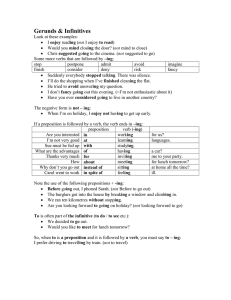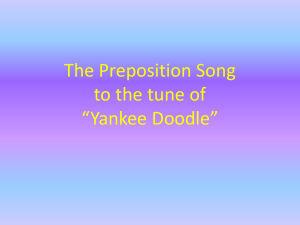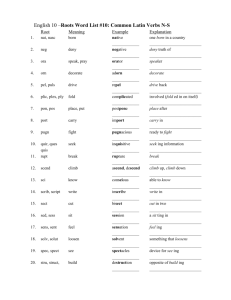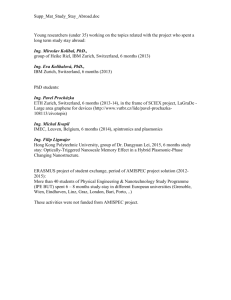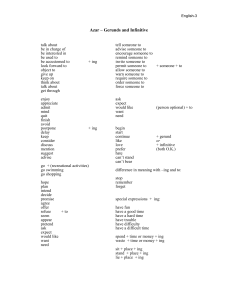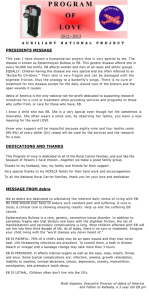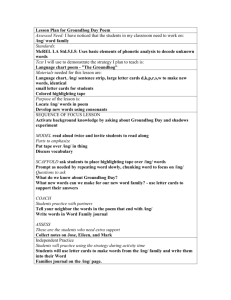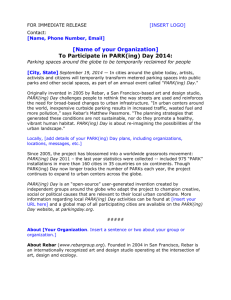A- Prefix Rule in Appalachia
advertisement
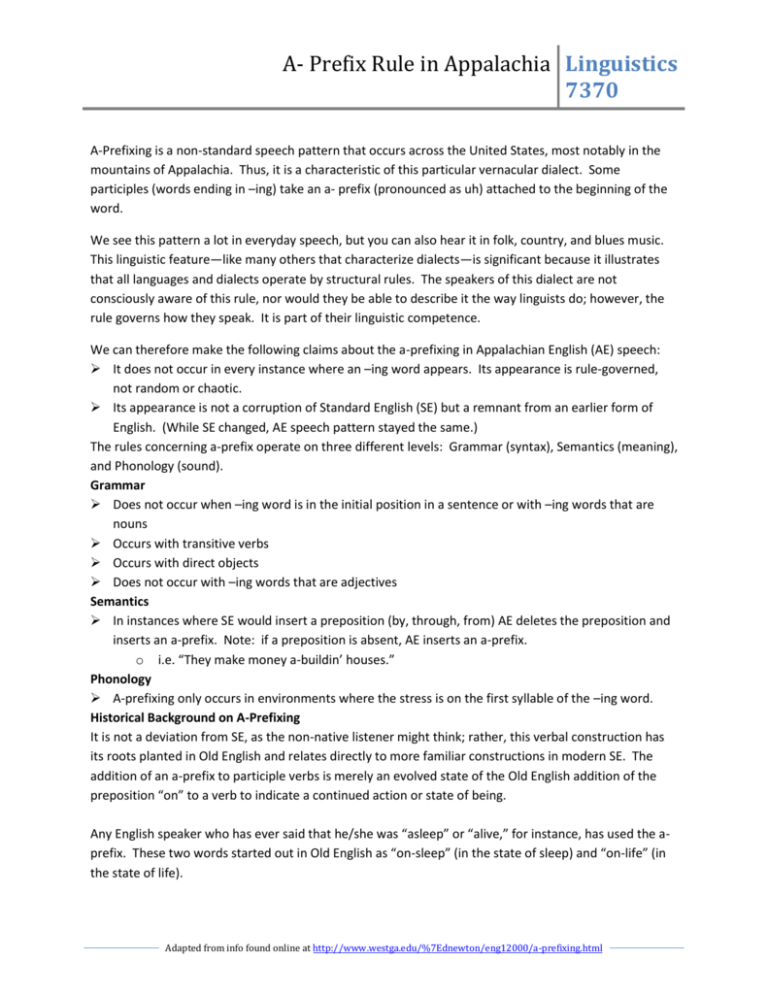
A- Prefix Rule in Appalachia Linguistics 7370 A-Prefixing is a non-standard speech pattern that occurs across the United States, most notably in the mountains of Appalachia. Thus, it is a characteristic of this particular vernacular dialect. Some participles (words ending in –ing) take an a- prefix (pronounced as uh) attached to the beginning of the word. We see this pattern a lot in everyday speech, but you can also hear it in folk, country, and blues music. This linguistic feature—like many others that characterize dialects—is significant because it illustrates that all languages and dialects operate by structural rules. The speakers of this dialect are not consciously aware of this rule, nor would they be able to describe it the way linguists do; however, the rule governs how they speak. It is part of their linguistic competence. We can therefore make the following claims about the a-prefixing in Appalachian English (AE) speech: It does not occur in every instance where an –ing word appears. Its appearance is rule-governed, not random or chaotic. Its appearance is not a corruption of Standard English (SE) but a remnant from an earlier form of English. (While SE changed, AE speech pattern stayed the same.) The rules concerning a-prefix operate on three different levels: Grammar (syntax), Semantics (meaning), and Phonology (sound). Grammar Does not occur when –ing word is in the initial position in a sentence or with –ing words that are nouns Occurs with transitive verbs Occurs with direct objects Does not occur with –ing words that are adjectives Semantics In instances where SE would insert a preposition (by, through, from) AE deletes the preposition and inserts an a-prefix. Note: if a preposition is absent, AE inserts an a-prefix. o i.e. “They make money a-buildin’ houses.” Phonology A-prefixing only occurs in environments where the stress is on the first syllable of the –ing word. Historical Background on A-Prefixing It is not a deviation from SE, as the non-native listener might think; rather, this verbal construction has its roots planted in Old English and relates directly to more familiar constructions in modern SE. The addition of an a-prefix to participle verbs is merely an evolved state of the Old English addition of the preposition “on” to a verb to indicate a continued action or state of being. Any English speaker who has ever said that he/she was “asleep” or “alive,” for instance, has used the aprefix. These two words started out in Old English as “on-sleep” (in the state of sleep) and “on-life” (in the state of life). Adapted from info found online at http://www.westga.edu/%7Ednewton/eng12000/a-prefixing.html
